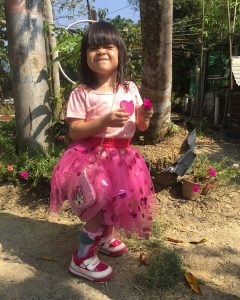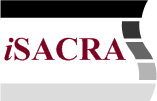
These survey results are based on reports of 60 individuals, ages birth to age 55. (for a downloadable PDF, click here.)
| SA/CRS specific
–spine -spinal cord/sensation -muscle -kidney -genital region -pelvic region -lower limbs (legs, feet) -growth |
Conditions found to occur more frequently among those with SA/CRS than in the general population
The connection to SA/CRS is unknown and probably varies from individual to individual: -Non-related, co-occurring, different genetic or unknown cause -Co-occurring as a feature of another syndrome -Co-occurring as the same fetal environment issue that impacted spinal formation, also impacted other structures |
Conditions present in individuals with SA/CRS, but not with any increased frequency than in the general population.
–Probably with no direct connection or link to SA/CRS, possibly part of other known or unknown syndromes. |
Syndromes found in addition to the diagnosis of SA/CRS:
-Syndromes with SA/CRS as a feature of the syndrome. -Syndromes that do not include spinal issues as a feature but which do include other overlapping conditions such as kidney, heart, and genital features as a part of the syndrome. -Syndromes that do not appear to have a connection to SA/CRS but may co-occur. |
| MUSCLE: Flat buttocks Atrophy of leg muscles |
GASTRO/ABDOMINAL GI reflux, GERD, gastroparesis (slow emptying stomach, hypomotility in GI), trachea-esophageal fistula, displaced spleen, omphalocele (abdominal wall defect), situs inversus (stomach and liver on the wrong side of the body).Malrotation of intestines(see also VACTERL) |
Food sensitivities dairy, grapes, solids, etc. (but this may be part of an issue with the central nervous system (CNS) of which the spinal cord and nerves extending from the spinal cord are part.) | VACTERL-stands for vertebral defects, anal atresia, cardiac defects, tracheo-esophageal fistula, renal anomalies, and limb abnormalities. People diagnosed with VACTERL association typically have at least three of these characteristic features. |
| FEET: Club foot, vertical talus (rocker bottom feet), cavas (high arch), fixation of ankle/toes, small feet |
HEART Heart defects, VSD, PFO, arrhythmia, duplication of valve, heart murmur, transposition of great arteries (SEE ALSO VACTERL) |
Complex cyst (absorbed twin) | Reynaulds syndrome-some areas of the body (hand, feet) have reduced blood flow, feel cold/numb in response to cold temp or stress |
| LEG Different size legs (leg length discrepancyFixed knee joint, bentFixed knee joint, straightWebbing between thighs and calvesWidely splayed legsSmall size legsSmall size femurMissing kneecap Patellar subluxation Paralysis of legs (complete or partial) Atrophy of muscles (related to paralysis) Bilaterial internal tibial torsion Poor circulation |
EARS Hearing loss mild through moderate, deaf one or both ears, Chronic ear infections, unilateral or bilateral microtia or atresia,Skin tag near ear. (See also GOLDENHAR Syndrome in column 4) |
arthritis | Goldenhar syndrome ( a subset of hemifacial microsomia with epibulbar dermoids)
Oculo auriculo vertebral spectrum, or OAVS (oculo refers to the eye, auriculo to the ear, and vertebral to the spine). This spectrum involves the eye, ear, and spine. The problems are the same as described for hemifacial microsomia and Goldenhar Syndrome. Like Goldenhar Syndrome, one side of the face is usually affected, but 10-33% have both sides affected. OAV spectrum encompasses both hemifacial microsomia and Goldenhar syndrome. It is thought that Goldenhar Syndrome may be a more complicated version of OAV while hemifacial microsomia may be a milder version. It is possible that someone with just a small ear, and no other problems, may be at the very mildest end of this spectrum. |
| SPINE
Hemivertebrae, butterfly vertebrae, partial absence of sacrum, complete absence of sacrum, hemisacrum Absence of spine extending into lumbar Complete absence of lumbar and sacral spine Partial absence of thoracic, complete absence of lumbar and sacral spine Curve of spine (lordosis, kyphosis, scoliosis) |
HANDS hypermobile wrists, fingers, reduced strength in hands, atrophied thumb muscles (see also VACTERLS) |
Cognitive delay
Physical developmental delay, gross and fine motor delay |
Klipple Feil syndrome –fusion of cervical vertebrae caused by mutations in the GDF6, GDF3, or MEOX1 gene; but the same condition can appear without this genetic mutation. |
| SENSATION
Reduced sensation associated with absence of spinal cord Hyper sensitivity of specific areas (genitals, feet, back) Heat intolerance, decreased ability to sweat (see also VACTERLS) |
TEETH Enamel didn’t form on some baby teeth, slow to lose baby teeth, slow growth of permanent teeth |
Hemangioma: birthmark though birthmark at the base or low area of the spine is more common among those with SA/CRS). Other birthmarks do not appear more frequently than in the general population. | Duane retraction syndrome: A muscle imbalance of the eye which can result in the inability to turn eye inward or outward. The palpebral fissure is narrowed on attempted turning in of the eye |
| SPINAL CORD
Tethered cord Caudal equine Blunt end Split cord type II
|
NECK Torticollis, short neck, shortened vertebrae in neck, See also Kippel Feil syndrome (fused neck vertebrae). |
Cleft palate, see also GOLDENHAR syndrome. | Mayer Kuster Hauser Rokitansky syndrome: Type 1: vagina and uterus underdeveloped or absent, although external genitalia are normal.
Type 2: the kidneys may be abnormally formed or positioned, or one kidney may fail to develop (unilateral renal agenesis). Affected individuals commonly develop skeletal abnormalities, particularly of the spinal bones (vertebrae). Females with MRKH syndrome type 2 may also have hearing loss or heart defects. |
| RIB Extra rib, missing rib, fused rib |
SPINE/spinal cord
Spina bifida (OSD-lipoma, meningocele) Syrinx-fluid-filled sac in spinal cord |
Epilepsy (petite mal, generalized) | . |
| KIDNEY
Single kidney Horseshoe kidney Fused kidney Different size kidney Hydronephosis (reflux to kidney) Chronic kidney disease (CKD) |
HEAD
Atlanto-axial instability Skull shape anomalies: Wide Skull (brachychephaly) Narrow Skull (scaphocephaly) |
Repetitive behaviors (non-autistic)
Mild Autism spectrum Aspergers syndrome (autism spectrum) |
|
| GENITALIA
Imperforate anus Cloacal malformations Uvula malformation Vagina malformation Undescended testicles Rectovaginal fistula Duplicate ureters on both sides |
FACE
hemifacial macrosomia Facial paralysis See also GOLDENHAR syndrome |
Early onset puberty | |
| PELVIC area
Sacral dimples Hip dysplasia Hip dislocation Small pelvis |
OTHER Latex allergy (increased risk when there are spinal conditions) |
Periventricular leukomalacia (white brain matter injury) | |
| Neurogenic bowel (as a result of lack of nerve function at end of spine) | Congenital cystic adenoid malformation (lung)
Enlarged liver |
||
| Neurogenic bladder (as a result of lack of nerve function at end of spine)
|
Migraines | ||
| GROWTH
Slow growth–does not follow standard growth chart Reduced appetite (possibly due to competition for space among organs and stomach) Adult obesity |
High blood pressure | ||
| Amblyopia, eye convergence (left eye diverts) | |||
| Seasonal allergies | |||
| Anxiety, depression | |||
| Psoriasis | |||
| Frequent nosebleeds | |||
| Microcephaly | |||
| Fingers and feet missing crease lines, finger height differences | |||
| Hyperthyroidism | |||
| Polycystic ovarian syndrome (PCS) | |||
| ADD or ADHD | |||
| Swallowing dysphagia | |||
| Anemia, vitamin deficiency |
